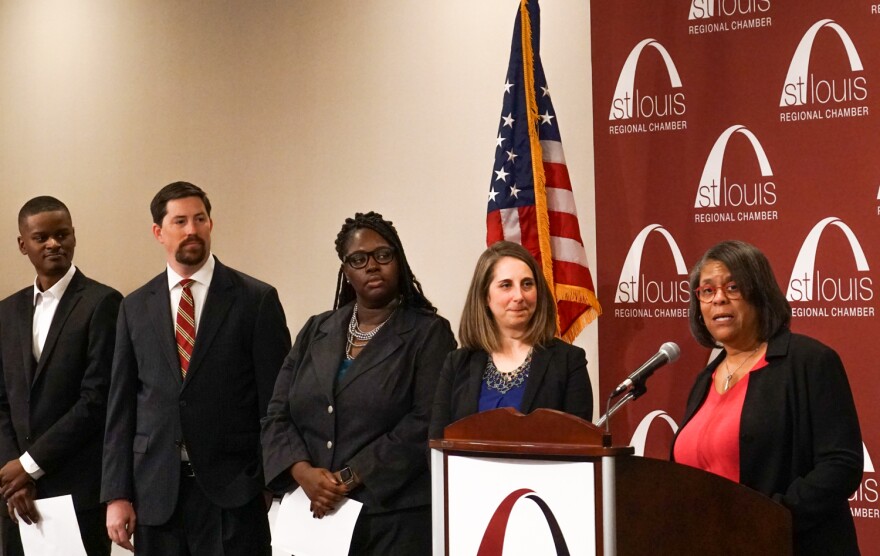The unemployment rate in St. Louis region is the lowest it’s been in 17 years, but that’s only for some people. Unemployment is higher for African-Americans.
The Regional Youth Employment Coalition that launched this week aims to close that gap for young people entering the job market in St. Louis and St. Louis County. The coalition is a group of local organizations, nonprofits and private sector partners teaming up to boost employment opportunities, especially among African-American youth.
“We know that we are currently having stark disparities and who has access to economic opportunity and mobility in our economy,” said Valerie Patton, a senior vice president with the St. Louis Regional Chamber. “These disparities fall along racial lines with African-Americans.”
The program aims to unite pre-existing job training and community development programs, so they can specifically target underserved communities.
Katie Kaufmann, director of Ready By 21, the nonprofit spearheading the coalition, said there was a desire in the workforce and economic development community to collaborate, but the groups weren’t familiar with one another.
“So we started providing a space for those organizations to get to know each other, to share what they were excited about,” she said, “and it sort of organically grew to them seeing the benefit and saying, ‘We want to do this more intentionally. We want to do this more fully.’”
Together the organizations that make up the coalition serve 3,000 youth in St. Louis and St. Louis County each summer. With the help of community partners like Metrolink, they’re able to provide what they call “wrap-arounds” to assist with all aspects of retaining a job.
Last summer 435 participants were allowed to take part in Metro Transit’s Gateway Go program, which offered them half-priced transit fare to and from work, using their cards over 20,000 times.
Kaufmann said, the goal of the coalitionis not to reinvent the wheel in regional job creation and youth workforce development programs. Rather she said the coalition is “really trying to leverage the specific expertise of all of the various organizations in town and bring it together for more impact.”
The coalition will help to pair young people with local companies or organizations where they can work in a entry-middle level position. Most employers and nonprofits will spend around $2,500 per person. That dollar amount includes wages, job coaching and other services targeting enhancing financial literacy and soft-skills.
Non-traditional recruitment will also be a centerpiece of the coalitions work, Patton said.
“Go into the churches, go into the community centers. It may be even something as simple as setting up at the local basketball court or soccer field to be able to recruit people that don’t have the exposure,” she said.
Patton emphasized thatit’s difficult to know exactly why there’s a large gap between general city and county unemployment and African-American unemployment.
But, she said, generally, it likely has to do with “a region that has historically been fragmented and segregated. The opportunities have not been equal. So we haven’t had equal access to the opportunity.”
Follow Abigail Censky on Twitter: @AbigailCensky



